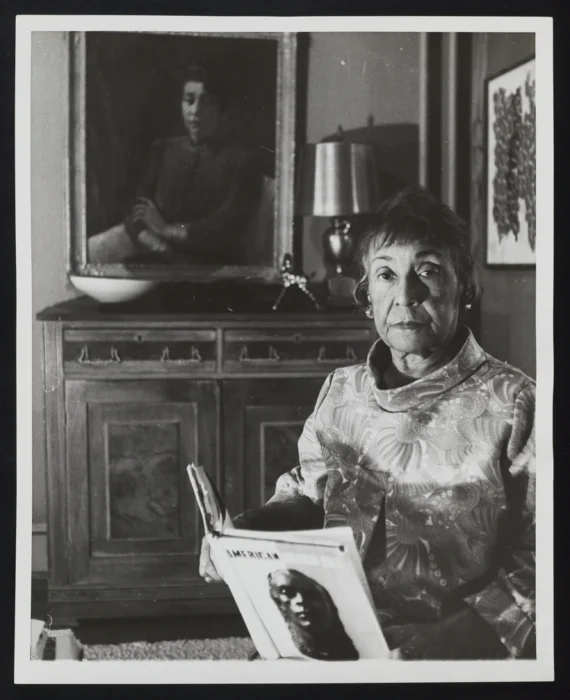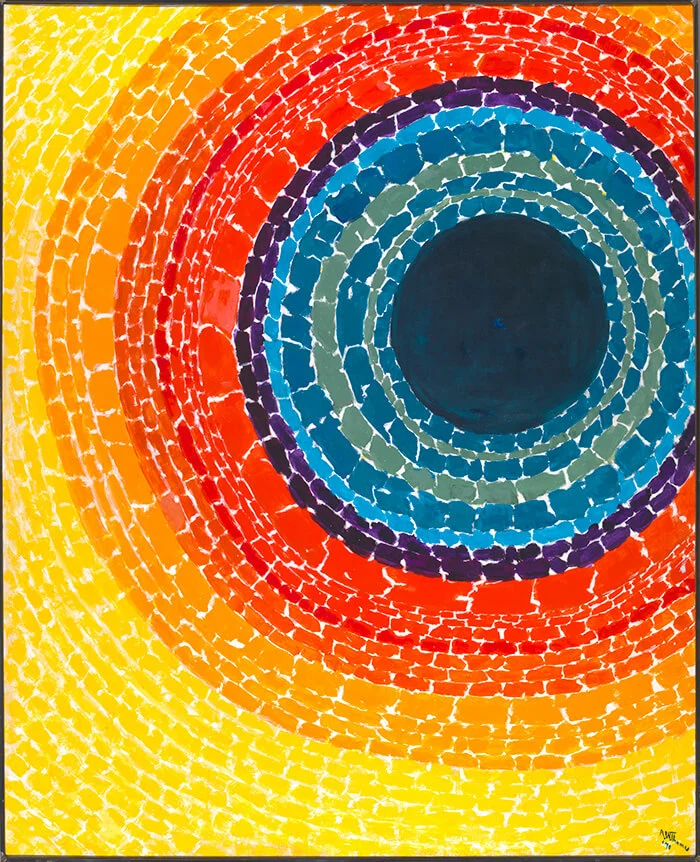Art can be anything. It could be behavior—as long as it’s beautiful.
Alma Thomas (1891–1978)
Composing Color: Paintings by Alma Thomas invites you to see the world through the eyes of this singular figure in the story of twentieth-century American art. Thomas developed her exuberant form of abstract painting after retiring from a long career as a schoolteacher. Taking inspiration from nature, the cosmos, and music for her vibrant, rhythmic art, Alma Thomas incorporated the intuitive approach of gestural abstraction and beaming hues of color field painting into her work, which goes beyond established genres.
Thomas rarely picked up a paintbrush without a soundtrack. Memorial Art Gallery invites visitors to bring headphones and a personal device to explore the exhibition with our staff-curated playlists.
About the Artist
Alma Thomas (1891–1978) developed a powerful form of abstract painting late in life. A talented representational artist, she produced brilliantly colored and richly patterned works intimately connected to the natural world.
Born in Columbus, Georgia, Thomas became the first Howard University graduate in fine arts and earned a master’s degree in arts education at Columbia University. In 1972, she became the first Black woman to have a solo exhibition at the Whitney Museum of American Art. Around then, Thomas reflected on her segregated childhood: “One of the things we couldn’t do was go into museums, let alone think of hanging our pictures there. My, times have changed. Just look at me now.”

Composing Color: Paintings by Alma Thomas is organized by the Smithsonian American Art Museum. Generous support is provided by the Helen Frankenthaler Foundation, Chris G. Harris, The Wolf Kahn Foundation, and Susan Talley.

Exhibition Sponsors
Associate Sponsors
Sonya and Quincy Allen
Axom Home / Gus Modern
Caitlin and Bennett Kireker
Sharon and Robert Napier
George and Barbara Segel
Contributing Sponsors
Anonymous
Gail and Patrick Riggs
Fellow Sponsors
Mary G. Crowe
Courtney and Mike DeRisio
Ron Lovell
Deanne Molinari
Nannette Nocon and Karl Wessendorf
Friend Sponsors
Marilynn and David Grant
Memorial Art Gallery Endowed Fund Support
Dr. and Mrs. James H. Lockhart, Jr. Fund
Robert L. and Mary L. Sproull Fund
Nancy R. Turner Fund for Temporary Exhibitions

